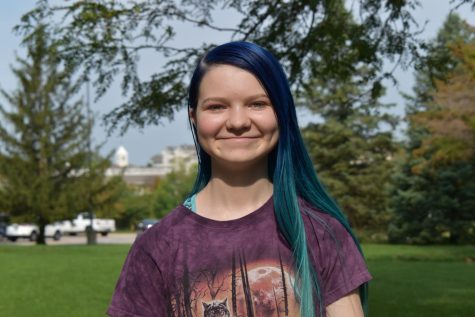On target
West teachers strive to improve learning experiences with the introduction of learning targets.
Last school year the Instructional Leadership Team, a group of teachers that meet and talk about ways they can improve the school, came up with learning targets as a way to help students who are struggling with their classes. Learning targets are a set of questions or statements updated weekly or daily that students should be able to answer or discuss before starting the next learning targets. These learning targets were implemented at the beginning of the 2018-2019 school year.
Often, learning targets are displayed on whiteboards, Google Docs or presentations. The method that they are shown is up to the teacher. One of the main goals of learning targets is to inform students what they should be learning and skills they should be gaining in class that day.
“If we all as teachers take some time to identify what the learning targets are, we now have a lesson that’s put together, that is targeted towards a specific kind of learning,” said French teacher Theresa Juhl. “It’s just a matter of ‘Let’s tell you what that is. Let’s tell you why we are doing this. And let’s be mindful of that.’”
The targets provide a goal for students to reach for so they can better understand the class material.
“It helps the relationship between teacher and student identify, ‘We’re not communicating here. You’re not doing your work because you don’t know how and you don’t know what to ask [a] question about, [so] let’s go back to your learning targets,’” Juhl said.
Learning targets also make teachers more aware of what work they are giving their students. This awareness should prevent teachers from giving students busy work, and the work that students do get would help them learn what they need to.
“I make sure that quizzes, tasks and activities all align with what those learning targets are,” Juhl said. “Otherwise, it really feels like all we’re doing is going through the motions. I would be giving you busy work, and you [would be] treating it like it doesn’t matter.”
The Instructional Leadership Team hoped that learning targets would provide a bit of consistency to each class, but with the flexibility that teachers were given, this didn’t pan out.
“Teachers [are] given a ton of autonomy, which is awesome … but I think sometimes students [are] like, ‘But none of my teachers do it the same, like Canvas isn’t the same, learning targets aren’t the same.’ And so that’s maybe a point of frustration from a student perspective,” said AP Biology teacher Jenny Eustice.
When and where learning learning targets are displayed are the biggest differences between teachers. For instance, Juhl puts her learning targets on the lesson plan and they apply to one week.
“I walked out of [that meeting] like, ‘Okay, where am I going to put this?’ … If I have it on the lesson plan, I know I’m going to see it. I figured if I see it, then chances are pretty good [my students] are going to glance at it too,” Juhl said.
Chemistry teacher Michelle Wikner has her learning targets on her daily presentation. Her learning targets are often pulled from her Know, Understand and Do’s, or KUDs. KUDs were implemented around 2010 for the same reasons as learning targets. The difference with KUDs is that they relate to each unit instead of a daily or weekly basis.
“That was my starting point,” Wikner said. “Now, I’m just breaking it down into a day-by-day basis.”
One of the reasons for the large variation of how teachers are presenting the learning targets is because they were just implemented.
“The first step was, let’s just have them,” Eustice said. “The mode of communication was up to that person.”
Many teachers feel like they could be using learning targets more effectively. Wikner and Juhl both feel like repeating the learning targets more will help students figure out if they have learned them.
“I thought that [learning targets] might be more useful at the end of the period, or maybe before and at the end,” Wikner said. “I feel like before, sometimes the students don’t even know what this is, so they don’t have any connection to it. It’s just words on the board.”
West’s instructional coaches plan to host a pop-up professional development for other teachers to see what’s been working with learning targets, and to go over what hasn’t been working. They’ll go over problems like consistency and effectiveness.
“[We plan to] figure out what’s working with learning targets, what are some frustrations with learning targets and how can we make improvements,” Eustice said.
Your donation will support the student journalists of West High School. Your contribution will allow us to purchase Scholarship Yearbooks, newsroom equipment and cover our annual website hosting costs.

(she/her) Bess Frerichs is the online managing and feature editor. As a senior, this is her third and final year on staff. She enjoys reading, writing...


